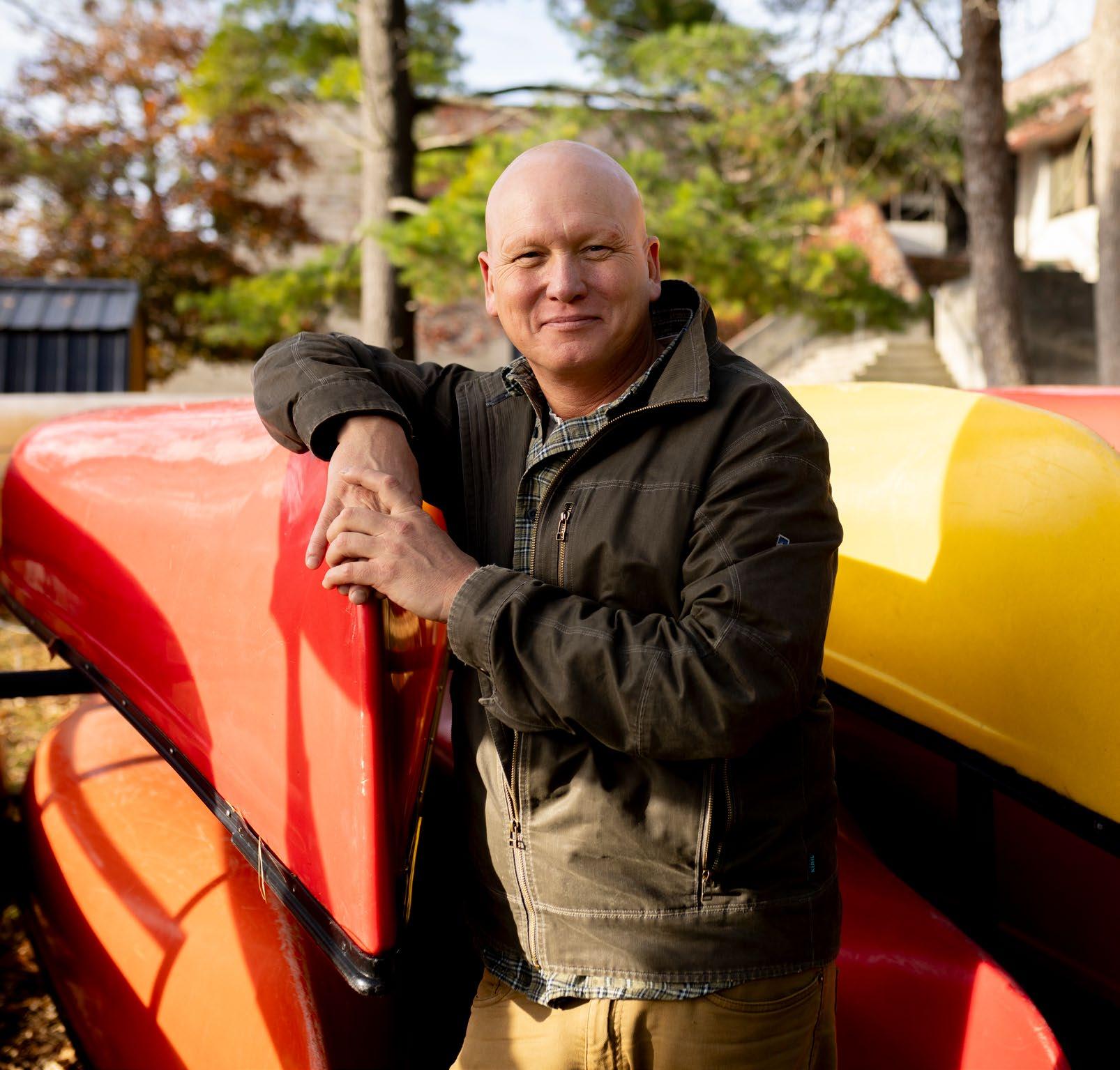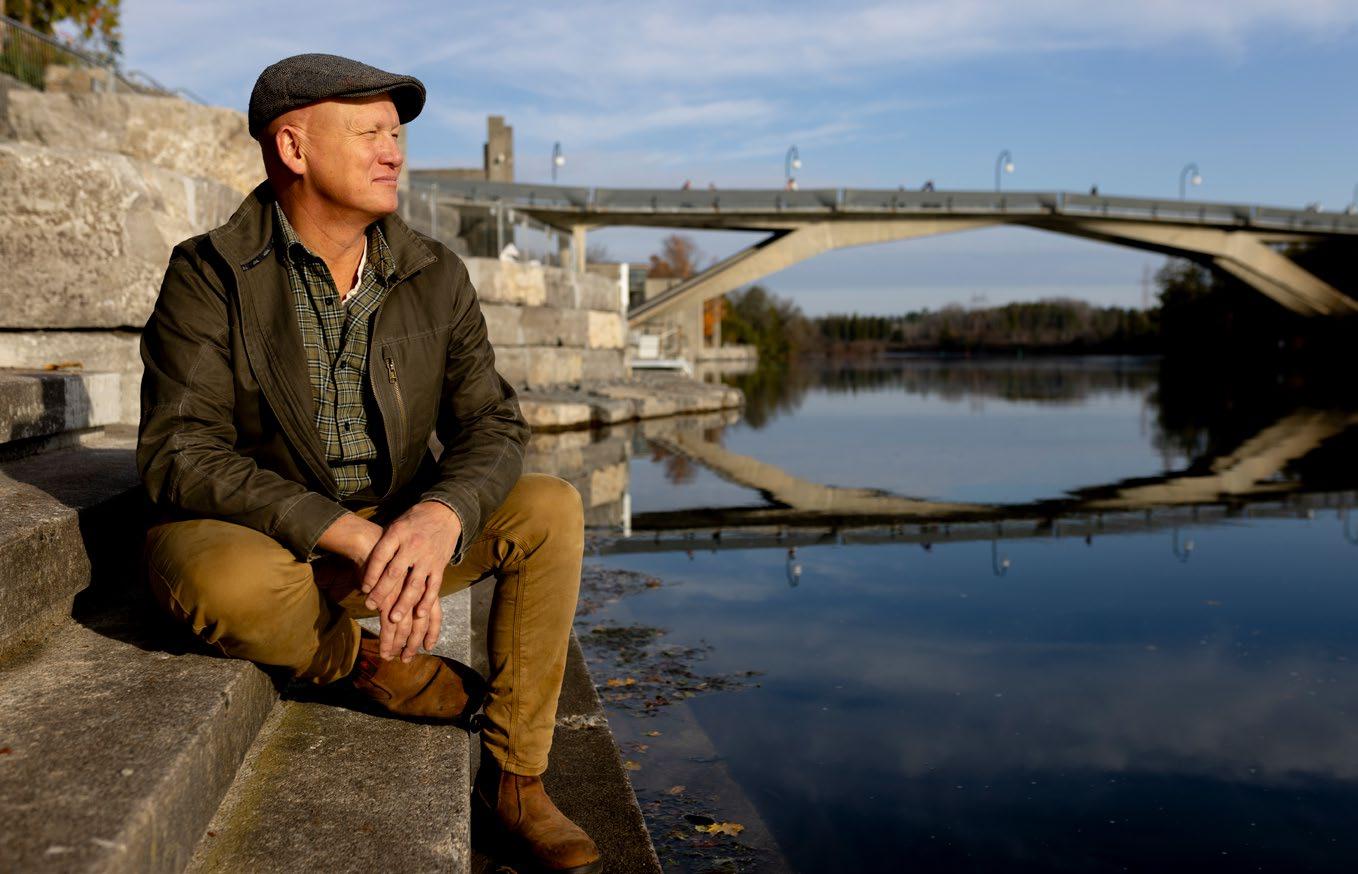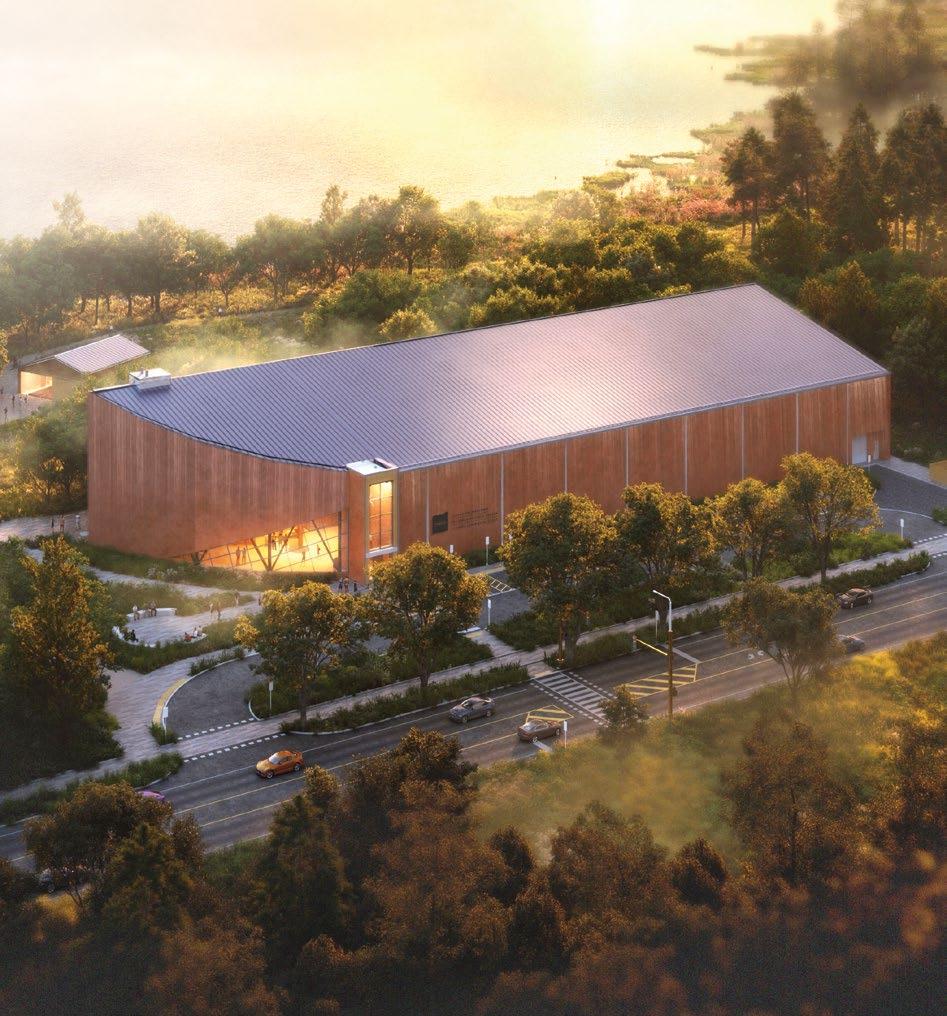
6 minute read
A JOURNEY CARVED IN WOOD & WATER
Canadian Canoe Museum curator Jeremy Ward ’89 talks canoes, community, and navigating life’s currents.
As a paddling enthusiast and curator of the world’s largest collection of paddled watercraft at the Canadian Canoe Museum, Jeremy Ward ’89 (Julian Blackburn College) is all too aware that our journey through life, like that on a river, is never linear.
Growing up in Thunder Bay and Ottawa, Jeremy’s early experiences were shaped by outdoor adventures, often centred on canoe trips. These experiences planted the seeds for what would become his life’s work but they remained dormant as he embarked on his Trent journey.
After completing his first year in a general Arts, History, and Anthropology program and being inspired by experiences such as participating in the Red Squirrel Road blockades supporting the Temagami First Nation, Jeremy decided to immerse himself in developing applied skills and working with his hands.
During his four-year hiatus, he worked with cabinet makers and canoe builders, volunteered on an archaeological dig in the Cycladic Islands in Greece, planted trees, and travelled across the country. It was during this time that his passion for canoe building really bubbled up to the surface.
“I’ve always had a passion for learning through making and understanding the learning around making, such as learning about the cultures, the craftsmanship, the traditions behind it.”
Jeremy returned to Trent determined to blend his academic interests with his love for craftsmanship. As a part-time student, he completed his four-year degree in Canadian Studies and Indigenous Studies, where he received the James G. Wharry Scholarship. After that, he began pursuing his Masters, working in the Frost Centre for Canadian Studies.
Planting the Seeds for a Career Spanning Three Decades
When recalling his time at Trent, it is the opportunities to learn outside of the classroom that laid the foundation for Jeremy’s lifelong work, allowing him to develop a deep respect for learning on the land and the power of communitydriven cultural exchanges.
Highlights include coordinating Trent’s field school in the Nunavut community of Pangnirtung for several years and participating in Trent’s esteemed Temagami Colloquium.
“It was a great period in my life. Those experiences, the field schools, the Temagami blockade, and getting out of the classroom into the community, meeting with people and learning from their perspectives, were eye-openers and put me on this journey,” Jeremy shares.

When Two Worlds Collide
In the mid-1990s, the Canadian Canoe Museum was in its early days of becoming established in Peterborough, fueled by a grassroots movement and driven by the dedication of paddling enthusiasts, Trent faculty, and community members, including some of Jeremy’s professors at the time.
Jeremy joined the Museum as a volunteer in 1997 and quickly became an integral part of its staff. He officially joined the team in 1998 and was appointed as curator in 2008.
“What has always enchanted me about working with a themed collection like this is that it’s much more than just the objects themselves. It’s a way to connect with people, culture, stories, and memories. The potential is limitless. The conversations it sparks often carry different perspectives on familiar subjects; whether about water connections and stewardship, craftsmanship, or the complex histories and changing relationships across this country over time, they are empowering and strengthen our connection to the landscape and to each other,” Jeremy explains, his face lighting up at the chance to chat about the Museum’s extraordinary collection and the dynamic team he works with.
A New Chapter in Sharing the Story of the Canoe
The recent move to a stunning new facility on the edge of Peterborough’s Trent-Severn Waterway marks a pivotal chapter in the Canoe Museum’s story. With the entire collection of over 650 watercraft housed within its walls, many of which are featured in its 20,000 square feet of new exhibits, the Museum is now able to showcase its collection in ways that were previously unimaginable. Built largely with local trades and designed to evoke the craftsmanship of a canoe, the facility also fosters a closer connection to the land and water and offers visitors a true sense of place, with its location on the water’s edge designed to facilitate outdoor experiences and community engagement.
Jeremy is especially proud of the ways the new museum integrates contemporary perspectives with historical artifacts.
“We have the opportunity to anchor what is a very historical collection squarely in the present, to bring contemporary perspectives that are firmly planted in their place of knowledge and experience,” Jeremy shares.
“Our role is more about facilitating the sharing of knowledge. Creating a space where diverse voices and perspectives can be heard and respected.”
For Jeremy, the canoe is not just a historical object—it is a living symbol of resilience, ingenuity, and community. As he reflects on his nearly 30 years with the Museum, he remains passionate about its mission to foster connections between people, the land, and the water.
“We have the opportunity not only to anchor this historically significant collection in the present but also to make space for contemporary voices rooted in unique knowledge and lived experiences,” Jeremy reflects. “Our goal is that visitors find a place where their story is seen and valued.”
The Museum was recently highlighted in the New York Times’ “52 Places to Go in 2025,” underscoring its importance as a cultural destination along the Trent-Severn Waterway. The Trent-Severn Waterway earned the 40th spot on the list and is the only Canadian location included. The Museum’s commitment to telling the story of the canoe, in all its historical and contemporary dimensions, ensures it remains a vibrant part of Canada’s heritage and our connection with the land.

Trent and the Canoe Museum share an intrinsic connection spanning decades:
• Trent faculty members, students, and alumni paddling along the Museum’s journey to becoming stewards of the world’s largest and most significant collection of canoes, kayaks and paddled watercraft.
• Trent faculty members played an integral role in the establishment of the Museum in Peterborough in the mid-1990s.
• Honouring and sharing Indigenous history, traditions, cultures, and Indigenous Knowledge is ingrained in the very fabric of Trent and the Canoe Museum.
• The late Gidigaa Migizi (Doug Williams) ’69, professor, elder, and community leader, made vital contributions to both organizations as an educator and advocate for Anishnaabeg treaty rights.
• Over the years, many Trent faculty members and alumni have served as Canoe Museum board members and volunteers, helping move the collection and create exhibits.
• For years, Trent University’s academic departments have partnered with the Canadian Canoe Museum to bring experiential learning to life through workshops, field trips, research projects and other educational programs.
• The Jack Matthews Fellowship, established in 2008 with funding for an annual speaker series, honours the visionary leadership of Jack Matthews and his pivotal role in founding both Trent’s International program and the Museum.





